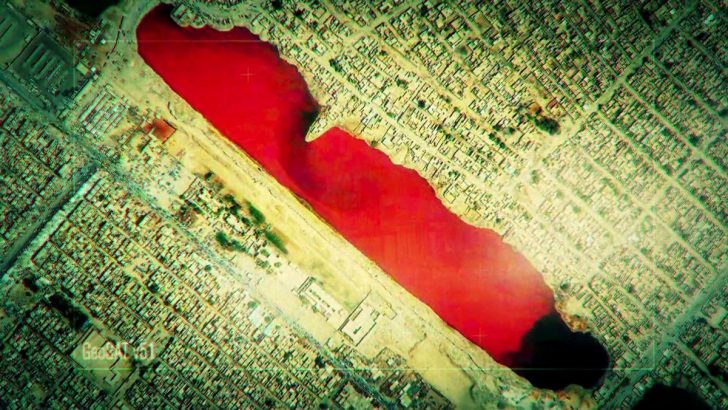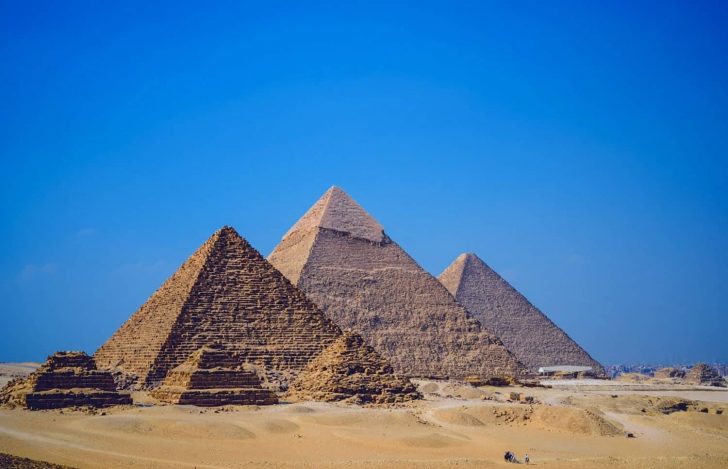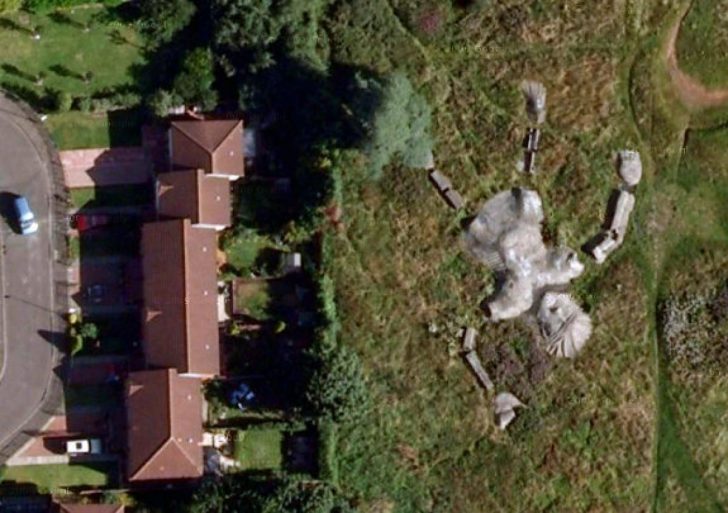In the age of modern technology, Google Earth has given us the incredible ability to explore our planet from the comfort of our own homes. It is a tool we use to check out our childhood neighborhoods, virtually visit far-flung destinations, and even settle bar bets about the location of the world's biggest pizza.
However, lurking beneath the surface of Google Earth's vast database are some truly bizarre discoveries that defy explanation.
From unexcavated pyramids in Egypt to a blood-red lake in Iraq, here are the top six weird things shown on the satellite imagery of Google Earth that will leave you scratching your head.
Blood Lake in Iraq
One of the most surreal and unsettling discoveries on Google Earth is the "Blood Lake" in Iraq. Located near the city of Sadr City, this lake is known for its vivid crimson hue. While it may look like something out of a horror movie, the coloration is due to high levels of salt and minerals, giving the water its distinctive appearance.

Getty / Here are some weird things shown on Google Earth’s satellite imagery.
Despite the eerie aesthetic, the lake is a natural wonder that continues to intrigue scientists and curious observers.
The Pentagram in Kazakhstan
In the remote deserts of Kazakhstan, Google Earth has unveiled a massive pentagram etched into the Earth's surface. This five-pointed star, measuring over 1,200 feet in diameter, has fueled wild conspiracy theories and sparked the imaginations of curious minds around the world.
Nonetheless, some speculate that it is a symbol associated with secret societies or even extraterrestrial activity. While there may be a rational explanation, the pentagram remains a truly strange and mesmerizing sight.
Unexcavated Pyramids in Egypt
Egypt is famous for its ancient pyramids, but did you know that Google Earth has revealed the existence of unexcavated pyramids lurking beneath the sands of Egypt?

Google / Thanks to satellite imagery, we can catch a glimpse of these enigmatic structures, tantalizing us with the possibility of unlocking the secrets of ancient Egypt.
These mysterious structures, located in Saqqara, have long been shrouded in mystery. Some speculate that they could hold untold treasures or even hidden chambers waiting to be discovered.
The "Badlands Guardian" in Canada
Heading north to Canada, we find the "Badlands Guardian," a remarkable geoglyph that resembles a human head wearing a Native American headdress. This stunning natural formation, which covers an area of about 9,000 square meters, was created by erosion and geological forces over millennia.
However, from above, it takes on the appearance of a colossal sentinel watching over the landscape. It is a reminder that nature has a way of crafting artistry even in the most unexpected places.
Looting Holes in Syria
The ongoing conflict in Syria has taken a heavy toll on the country's historical heritage. And Google Earth has documented the heartbreaking aftermath. Satellite imagery has revealed the extensive network of looting holes that have scarred the landscape.

GTN / Google Earth’s satellite imagery shows some looting holes in Syria that are unknown to the world.
These holes represent the work of looters who have plundered ancient archaeological sites, selling priceless artifacts on the black market. The aerial view from Google Earth serves as a stark reminder of the devastating impact of war on cultural heritage.
Aerial View of Elephants in Chad
On a lighter note, Google Earth has captured an incredible sight in the deserts of Chad: A herd of elephants from above. The striking aerial view of these majestic creatures roaming the arid landscape is phenomenal and it is a testament to the power of satellite technology in bringing us closer to the wonders of the natural world.
Thus, it is a reminder that even in the most unexpected places, nature can thrive.








